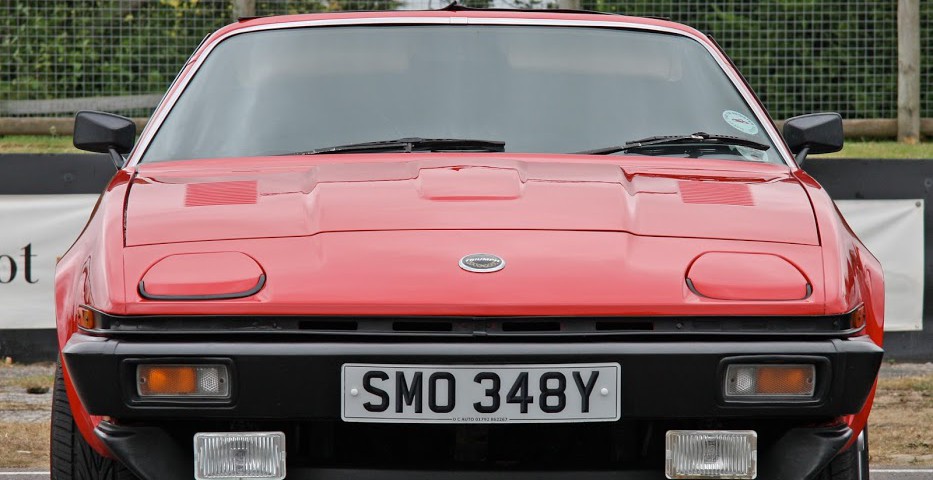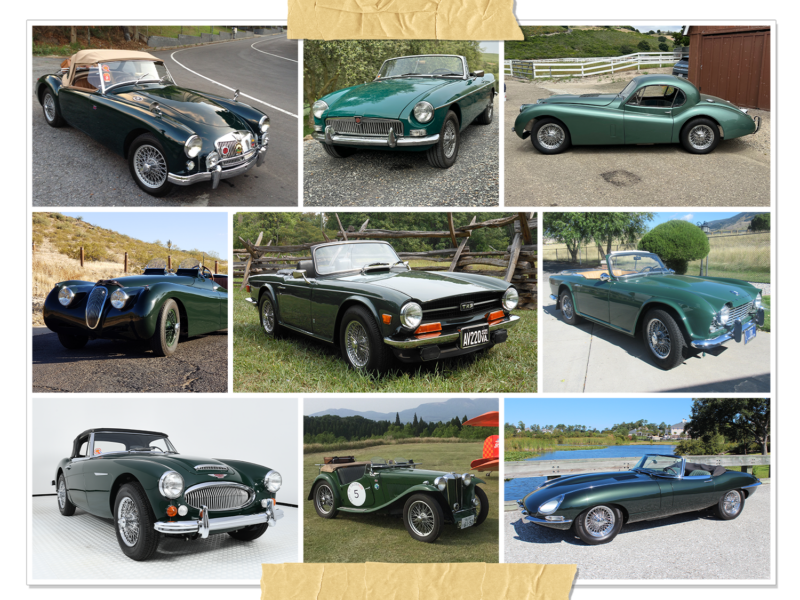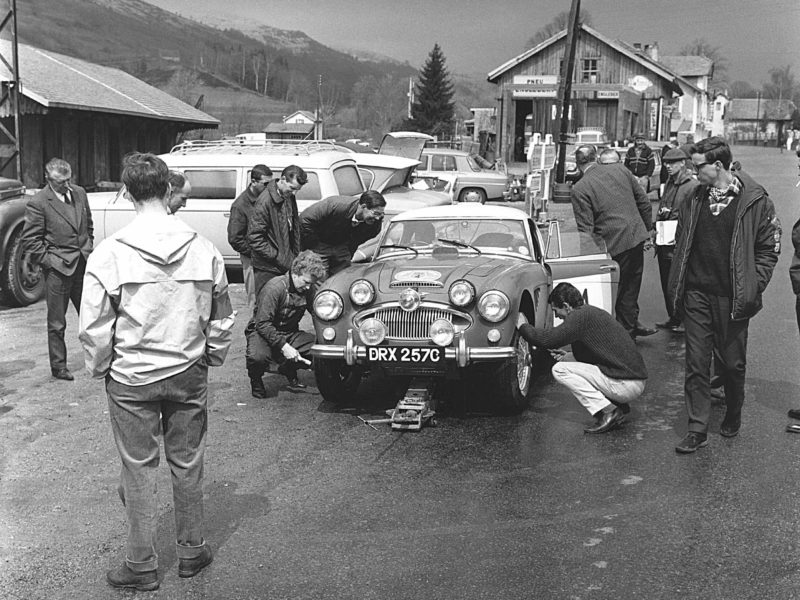This year marks the 20th anniversary of the introduction of the Triumph TR7, a car which, over time, has been both maligned and only faintly praised. Our correspondent, Mark Dixon, recently tested two fine examples owned by TR7 enthusiasts and reports thus…
I have to confess that while TR7s have never figured prominently in my list of all-time dream cars, I’ve long suspected that they weren’t as bad as myth would have it. So, when I was offered the opportunity to drive a pair of 7s, I quite looked forward to the experience.
Charles Porter, who lives in North Yorkshire, owns an immaculate silver TR7 convertible, while his girlfriend, Sally, drives a red TR7 fixed-head as her daily driver. Charles has also won various concours trophies with his car.
One of the greatest crosses the TR7 has had to bear is its controversial styling. You’ve probably heard the wonderful story about how designer Harris Mann got so fed up with having his preliminary designs rejected by Leyland management that he deliberately submitted a ludicrously over-the-top sketch, never dreaming they would take it seriously. Of course, they loved it!
“Motor” magazine summed it up like this: “The styling is, shall we say, different (opinions vary, though few people actually seem to like it), but in the modern Leyland wedge idiom.”
It was the proportions of the car which offended many. The high slab sides were capped with a turret-top window area which was certainly unusual, to say the least. The much better-looking convertible would not be launched for another four years.
Today, two decades after the fixed-head first appeared, familiarity has given the TR7’s shape a sort of respectability, and it no longer looks as odd as it once did. If you think back to 1976 when the Jaguar XJ-S was launched, you’ll probably remember the controversy it caused, and yet the characterful looks are now a major part of its appeal.
Curious looks were only part of the problem with the early TR7. For a start, it was not over-endowed with power, since the engine was basically a 2-liter Dolomite block with the SOHC cylinder head of the Dolomite 1850—not the twin cam Sprint item. In European spec., the engine put out only 105 bhp when even the late de-tuned TR6 could offer 125 bhp.
More annoying from a driver’s point of view was the four-speed gearbox, also lifted from the Dolomite. The ratios were strangely spaced, giving a comparatively high first gear (not good for quick getaways!) and a too-low fourth equating to 5,000 rpm at 90 mph. Early TR7s were not refined high-speed cruisers!
For reasons best known to themselves, BL never offered the overdrive unit used on the Dolomite, giving the TR7 the strange distinction of being the first TR never to have an overdrive option. The problem was temporarily solved in late 1976 when the five-speed SD1 gearbox was made available, but the American market quickly soaked up available supplies and the option was discontinued for the U.K. from January 1977. It was not reinstated until 1978, when it became a standard fitting.
But perhaps more influential on sales than anything else was the dreadful quality of the cars coming out of BL’s factory in Speke, near Liverpool, where the TR7 was initially built. This was at the peak of BL’s industrial troubles with its workforce and the infamous days when the unions dominated their workers. According to one ex-Triumph shop steward, memos were even being circulated on the shop floor about how to sabotage the cars before they left the plant! This manifested itself in corrosion problems—cars not being treated properly at the factory—and a spate of car fires in the U.S., caused by faulty wiring looms. Hardly surprising, then, is the fact that early cars are not sought after today.
Things started looking up with the introduction of the five-speed gearbox as standard in 1978, together with a stronger rear axle. The TR7 did not come of age until 1980, when the convertible versions went on sale in the U.K. for the first time. It was a much better looking car than the fixed-head, and unusually comfortable for an open car. But it was a classic case of too little, too late, and the TR7 sadly went out of production in October 1981.
ON THE ROAD
I tried the drophead over some twisting, moorland roads and instantly felt at home, because there are distinct similarities with the Rover SD1 that I drive every day. The column stalks, the slightly vague gear change, the long-travel brake pedal, and the relationship of the instruments to the driver all are familiar.
Strangely enough, despite its flashy ’70s exterior, the TR7 is remarkably restrained inside. It’s definitely of its time—all flat surfaces and hard plastic—but very inoffensive with it. There’s a slight “Space: 1999” feeling about the way the windscreen slopes down far away from you, leaving a long expanse of dashtop in between, but otherwise there are no surprises.
User friendliness is apparent on the move too. It’s an easy car to drive straight off. If you owned a car rental agency, you could hand out TR7s to strangers with impunity. That’s the upside of the BL parts bin approach to the TR7’s construction. The engine is no Italian twin-cam jewel, but it’s reasonably smooth and makes a pleasant sporty noise! What it doesn’t like is being thrashed. The rev counter may be red-lined at 6,000 rpm, but for most purposes 4,000 is a practical limit. It’s all you need, since the car doesn’t go any quicker at higher revs, and you might as well spare your cars!
Steering is commendably light and positive, helped on this car by the small Moto-Lita wheel which was fitted to the TR8s. On the dry moorland roads with their tight, spiraling corners, the 7 felt composed and secure, allowing you to make the most of the available power without trauma. Furthermore, this car is on standard suspension. Some owners like to uprate the springs, says Charles, but he finds the factory setup quite adequate.
Sampling the truly remarkable ride quality, I’d have to agree. We were traveling fairly quickly on narrow, bumpy roads, and yet the car soaked up the troughs and ridges impressively, without pitching or floating. The suspension is soft by the standards of most sports cars, and was deliberately made to suit American driving conditions, so it can become positively soggy on less well-maintained examples than this—worth remembering if you’re looking to buy a 7.
The touring side to the TR7’s character is emphasized by the excellent seats, which support well, and a reasonably draught-free interior. Other points where the 7 scores over more “traditional” sports cars is in the modern heating, ventilation system, and a decent top.
My experience of Sally’s fixed-head TR7 was short but instructive. Her car is from the last 50 or so fixed-heads made and is in remarkably sound condition, with only a small amount of rust pimpling on the front wheelarch lips to betray its daily use.
The interior is deceptively light and airy once you’re inside, with a surprising distance between the back of your head and the rear screen, which reduces any tendency towards claustrophobia.
On the debit side, the thick rear quarter pillars could prove a nuisance at junctions. I was not too keen either on the tartan interior trim, which also made an appearance on certain Vauxhalls. What was it about tartan in the ’70s?The Bay City Rollers have a lot to answer for…
Sally’s car retains the original steering wheel, which is noticeably larger than the one fitted to Charles’ drophead, but its size doesn’t compromise the handling, and it certainly gives the tall driver a clearer view of his instruments. For some reason the steering wheels fitted to late-model TR7s had thinner rims than the earlier ones, and they tend to flex a little.
Fuel consumption averages out at 25 mpg in mixed driving and 30 on a run, which is quite acceptable, and there’s a useful amount of trunk space too. Performance-wise, there’s little in it since the convertible is actually slightly heavier than the fixed-head due to the extra strengthening required.
Of course you could put forward the hoary old argument that the one thing the TR7 doesn’t have is character. RUBBISH—I say! It’s just as much a period piece as, say, a TR2, it’s just from a different era. To a generation who remember the delectable Joanna Lumley leaping out of a 7 in the TV show the “New Avengers,” this car is as much a part of their childhood as Chopper bikes and Space Hoppers! The ’70s revival is on its way, you know…
—Mark Dixon
(Mark Dixon, former assistant editor of “Popular Classics” magazine, now works as a freelance automobile journalist for several magazines in the U.K.)
Photo source: Brian Snelson from Hockley, Essex, England, via Flickr.








'20 Years of the TR7: Triumph or Disaster?' has no comments
Be the first to comment this post!